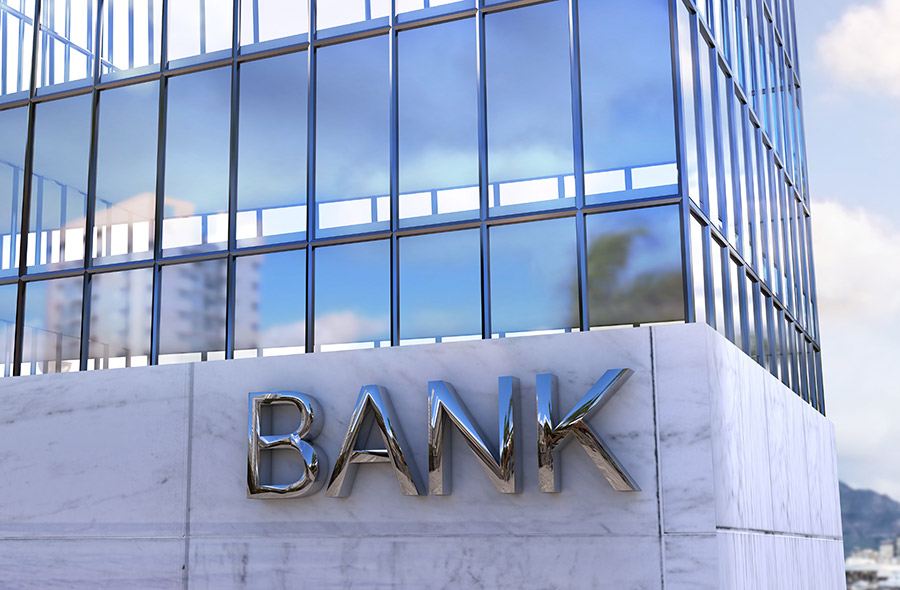Secure Facilities Management in the Banking Sector

The idea of the bank as a local building open from 9-5 with a big steel safe, a few security guards on chairs, and a lot of pens on chains is no longer accurate. Modern banks depend on servers more than steel, have ATMs and online banking requirements 24/7, and need the tightest possible physical and cybersecurity.
This growing complexity makes the modern banking sector highly energy-intensive. This is especially true for investment banks and retail banks with investment branches, which may need to operate around the clock and are frequent targets of hacking attempts. And regardless of the specific type of banking environment, protecting physical and digital assets is paramount; there can’t be any downtime when it comes to either security or customer demands.
Smart technology and forward-thinking facilities management in the banking sector can enhance security while maximizing uptime, improving energy efficiency, and creating better occupant experiences—even when banking hours never end.
The Changing Face of Banking
57,000,000. That’s how many people use a mobile device for their banking needs in the United States alone. That’s tens of millions of people checking accounts, making deposits, and transferring money. Often, these accounts are connected to cash-sharing apps and online payment systems that allow for instant digital transactions from anywhere in the world.
This is part of a rapidly growing shift toward online banking and diminishing reliance on physical branches. While before the pandemic, over 80% of banking users still used brick and mortar branches sometimes, that number is falling, as online banking becomes more accessible and, sometimes, necessary. By 2022, a full 65% of Americans are expected to be using digital banking in some form or the other, up from 61% in 2018. What is remarkable here is that the pandemic didn’t have a significant impact; even before we weren’t going anywhere, customers were shying away from going to the bank.
This trend away from physical banks isn’t just due to the rise of online alternatives. Thanks to widespread ATM networks, customers can take care of many of their daily needs without ever stepping into their local branch. The critical function of ATMs means that hundreds of thousands of bank-owned machines must be in working order 24 hours a day in locations across the country.
Digitalization and decentralization are also revolutionizing investment banking. Today, financial services in bulge bracket, middle-market, and boutique banks must be quicker and more agile than ever before. This requires greater connectivity and the deployment of increasingly sophisticated technologies.
These changes are transforming the way energy is used in the banking sector—and introducing new points of vulnerability.
The Challenges of Security in the Banking Sector
Energy efficiency and security are two of the most pressing challenges for facilities management in the banking sector.
Energy Efficiency
The banking sector relies on many types of buildings for everyday functions. These include:
Corporate offices
Data centers
Local branches
Keeping occupants safe and comfortable while protecting valuable assets requires significant amounts of energy and, as a result, comes at a high cost. Implementing strategies for reducing energy use without compromising the comfort of occupants or building functionality is therefore one of the best ways to realize meaningful savings. However, the nature of facilities management in the banking sector often means that a single strategy cannot be used across all facilities, as variables like peak hours and interior climate requirements can drastically differ from building to building, or even from room to room. As such, efficiency strategies must be guided by the needs of each facility.
Scalable Security
All banks, from small retail branches to investment bank headquarters, need the highest level of security. While this has been true since the first deposit was made anywhere, the digitization of financial services means the digitization of crime. Today, cybersecurity measures at most banks are rivaled only by those used in government.
This raises a few issues that may seem contradictory at first glance:
Security has to be at the highest possible level
Downtime is unacceptable and can lead to disaster
Troubleshooting must be quick and maintenance teams must be kept small to minimize security risks
While these are complex needs, the right technology and facilities management approach allows you to achieve your goals.
Better Facilities Management in the Banking Sector
Keeping buildings secure and efficient requires future-focused solutions. Today, that begins with unified building systems and intelligent analytics. Connecting all systems using a sophisticated integration engine and deploying an analytics platform with machine learning capabilities allows buildings to become greener and opens up opportunities for better facilities management in the banking sector.
Reducing Energy Use
Integrating smart technologies and using existing equipment in smarter ways can result in significant energy use reductions and, in turn, lower operating costs. A Bank of America study found that changes like better HVAC automation, variable air volume systems, and using occupancy sensor data to modulate lighting systems can result in thousands of dollars in monthly savings for even small retail bank branches. The same is true in corporate offices and data centers.
Analytics allows you to make the most of efforts like these. By collecting, organizing, and prioritizing data from all connected systems, you can gain visibility into how your buildings function. This includes objectively evaluating equipment performance and energy consumption, helping you identify areas of potential improvement. Often, the key to these improvements is advanced automation.
By integrating smart devices and sensors with an intelligent analytics platform:
HVAC systems can heat or cool rooms according to occupancy
Ventilation systems can be turned on or off depending on air quality data
Lighting can be adjusted according to natural light conditions.
What’s more, an analytics platform can anticipate patterns as it learns how your building functions and take preemptive action to promote comfort and safety. These strategies ensure that energy is used as efficiently as possible without sacrificing the occupant experience.
Targeted Maintenance Means Better Security
When something goes wrong with critical systems in financial services buildings, there is no “we’ll fix it tomorrow.” Even seemingly minor issues can quickly become disasters, and malfunctions must be resolved as soon as possible to protect people, property, and data. But that’s not always easy to do when you rely on human oversight and interval-based maintenance. In fact, the maintenance process can increase the risk of security breaches, as large crews working in sensitive areas introduce more points of vulnerability.
Unified systems and analytics deployed using the best available security protocols can improve security in several ways:
Advanced fault detection and diagnostics can identify anomalies as soon as possible and send prioritized alerts to avoid alarm overload
When possible, automatic adjustments can be made to correct problems immediately, without relying on manual intervention
When manual intervention is needed, the analytics platform can offer actionable insights to rapidly isolate problems and recommend pragmatic solutions.
Not only does this minimize downtime, it also limits the amount of time maintenance teams spend in sensitive areas of the building and the number of workers needed to resolve issues. These elements can all be instrumental in a robust facilities management strategy that prioritizes security.

Integrating With the Right Partner
Integrating building systems, adding smart technologies, and deploying intelligent analytics is no small task, particularly if your facilities span multiple sites and have highly specific requirements. Partnering with an industry-leading master system integrator (MSI) who understands the complex needs of the banking industry can help you prioritize your goals and map out a plan to make them actionable.
Buildings IOT specializes in open protocol building management systems and API connections for seamless integration of both new and legacy systems. Using onPoint, a powerful analytics platform, the data from your unified systems can then begin to transform into meaningful insights. With advanced machine learning algorithms, a user-friendly dashboard, and customizable reporting capabilities, onPoint allows you to look at both the big picture and the smallest details.

